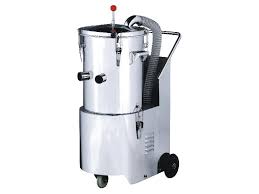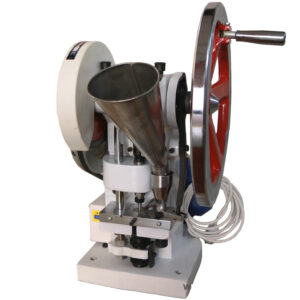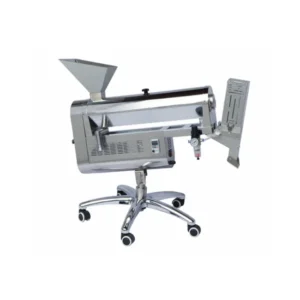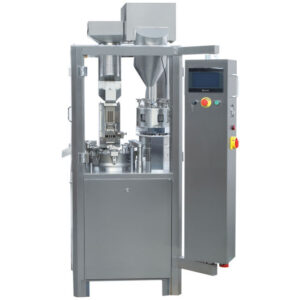Description
| Parameter | Specification |
|---|---|
| Model | XCJ |
| Type | Dust Collector |
| Power Supply | 110V/220V, 50Hz/60Hz (customizable) |
| Motor Power | 1.5 kW |
| Airflow Capacity | 1000 m³/h |
| Filtration Efficiency | 99.9% |
| Filter Type | Cartridge Filter |
| Filter Material | Polyester/Nanofiber |
| Filter Cleaning Method | Automatic Pulse Jet Cleaning |
| Dust Collection Capacity | 15 kg |
| Noise Level | < 70 dB |
| Dimensions (L x W x H) | 1200 mm x 600 mm x 1800 mm |
| Weight | 200 kg |
| Control System | PLC Control System |
| Operating Temperature | 5°C to 40°C |
| Warranty | 1 Year |
The XCJ Dust Collector operates on the principle of filtration. It employs a series of filters to capture dust particles suspended in the air, preventing their release into the environment. The process typically involves several stages:
Capture: Dust-laden air is drawn into the dust collector through an inlet. As the air enters the collector, large particles are captured by an initial filter or through mechanisms such as cyclonic separation.
Filtration: The remaining fine particles pass through a series of filters, often consisting of fabric bags, cartridges, or pleated media. These filters are designed to trap particles of varying sizes, ensuring high efficiency.
Separation: Once the dust particles are captured by the filters, the cleaned air is discharged back into the atmosphere. Meanwhile, the collected dust accumulates within the collector, ready for disposal or recycling.
Cleaning: Periodically, the filters require cleaning to maintain their effectiveness. This can be achieved through various methods such as reverse air flow, mechanical shaking, or pulse-jet cleaning.
By systematically removing dust particles from the air, the XCJ Dust Collector helps maintain air quality standards and ensures a safe and healthy working environment.
Applications of XCJ Dust Collector
The XCJ Dust Collector finds diverse applications across industries where dust emissions are a concern. Some common sectors where these collectors are utilized include:
Manufacturing: From metalworking to woodworking, manufacturing processes often generate substantial amounts of dust. XCJ Dust Collectors are employed to capture dust from cutting, grinding, sanding, and other machining operations.
Construction: Construction sites generate dust from activities such as concrete cutting, drilling, and demolition. Dust collectors help mitigate airborne dust, improving air quality and reducing health risks for workers.
Mining: Dust control is critical in mining operations to minimize health hazards and comply with environmental regulations. XCJ Dust Collectors are used to capture dust generated during drilling, blasting, and material handling processes.
Food Processing: In food processing facilities, maintaining hygiene standards is paramount. Dust collectors play a crucial role in removing dust and contaminants from the air, ensuring product quality and safety.
Chemical and Pharmaceutical Industries: Dust collectors are essential for controlling hazardous dusts in chemical and pharmaceutical manufacturing processes, safeguarding both workers and products.
These are just a few examples, illustrating the versatility of XCJ Dust Collectors across various industries where dust control is essential.
Functions of XCJ Dust Collector
The XCJ Dust Collector offers a range of functions aimed at effective dust control and operational efficiency:
Dust Collection: The primary function of the XCJ Dust Collector is to capture dust particles from industrial processes, preventing their release into the atmosphere.
Air Filtration: By passing the collected air through high-efficiency filters, the dust collector ensures that clean air is discharged back into the environment, meeting regulatory standards.
Continuous Operation: Many XCJ Dust Collectors are designed for continuous operation, allowing for uninterrupted dust removal during production processes.
Remote Monitoring: Advanced models may feature remote monitoring capabilities, enabling operators to track dust levels, filter status, and operational parameters from a centralized control system.
Energy Efficiency: To minimize energy consumption, XCJ Dust Collectors may incorporate features such as variable frequency drives (VFDs) and energy-efficient motors, optimizing performance while reducing operating costs.
Easy Maintenance: Simplified maintenance procedures, such as tool-less filter replacement and automated cleaning systems, contribute to the efficient operation of XCJ Dust Collectors.
Future Trends in Dust Collection Technology
As industries continue to prioritize environmental sustainability and workplace safety, several trends are shaping the future of dust collection technology, including:
Integration of IoT and AI: The integration of Internet of Things (IoT) and artificial intelligence (AI) technologies enables predictive maintenance, real-time monitoring, and adaptive control strategies, optimizing dust collection processes.
Enhanced Filtration Efficiency: Ongoing research focuses on developing advanced filtration media and techniques to improve dust capture efficiency while minimizing pressure drop and energy consumption.
Modular and Scalable Designs: Modular dust collection systems that can be easily expanded or reconfigured to accommodate changing production requirements are gaining popularity, offering flexibility and cost-effectiveness.
Smart Sensors and Controls: The deployment of smart sensors and control systems enables precise monitoring of dust levels, airflow rates, and filter conditions, facilitating proactive maintenance and optimization of dust collection systems.
Focus on Sustainability: Dust collection systems are increasingly designed with sustainability in mind, incorporating features such as energy recovery, waste minimization, and recyclable materials to reduce environmental impact.
Roles and Advantages of XCJ Dust Collector
The XCJ Dust Collector plays several critical roles in industrial settings, offering numerous advantages:
Environmental Protection: By capturing and containing dust emissions, XCJ Dust Collectors help prevent air pollution and minimize the impact of industrial activities on the environment.
Worker Health and Safety: Effective dust control provided by XCJ Dust Collectors safeguards the health and safety of workers by reducing exposure to airborne contaminants and respiratory hazards.
Regulatory Compliance: Industries must comply with stringent environmental regulations governing air quality and emissions. XCJ Dust Collectors assist companies in meeting regulatory requirements and avoiding costly fines or penalties.
Improved Productivity: Cleaner working environments contribute to enhanced productivity by reducing equipment downtime, minimizing cleanup efforts, and maintaining optimal operating conditions.
Cost Savings: By preventing dust-related equipment damage, reducing maintenance requirements, and minimizing energy consumption, XCJ Dust Collectors offer long-term cost savings and a favorable return on investment.
Enhanced Reputation: Demonstrating a commitment to environmental stewardship and workplace safety through the use of XCJ Dust Collectors can enhance a company’s reputation and brand image.
FAQS
- What is an XCJ Dust Collector?
An XCJ Dust Collector is a type of industrial filtration system designed to capture and remove airborne dust particles generated by various manufacturing processes. - How does an XCJ Dust Collector work?
The XCJ Dust Collector operates by drawing dust-laden air into the system, where it passes through filters that trap the dust particles. The cleaned air is then discharged back into the environment, while the captured dust is collected for disposal or recycling. - What industries can benefit from XCJ Dust Collectors?
XCJ Dust Collectors find applications across a wide range of industries, including manufacturing, construction, mining, food processing, and chemical/pharmaceutical production, where controlling dust emissions is essential for safety and regulatory compliance. - What are the primary benefits of using an XCJ Dust Collector?
The primary benefits of using an XCJ Dust Collector include improved air quality, protection of worker health and safety, regulatory compliance, enhanced productivity, cost savings through reduced equipment downtime and maintenance, and environmental sustainability. - Are XCJ Dust Collectors customizable to specific industry requirements?
Yes, XCJ Dust Collectors are often customizable to meet the specific requirements of different industries. They can be tailored in terms of size, filtration efficiency, airflow capacity, and features such as remote monitoring and control. - How often do XCJ Dust Collectors require maintenance?
Maintenance requirements for XCJ Dust Collectors vary depending on factors such as the type of dust being collected, the frequency of operation, and the system’s design. Generally, regular inspections, filter replacements, and cleaning are recommended to ensure optimal performance. - Do XCJ Dust Collectors comply with environmental regulations?
Yes, XCJ Dust Collectors are designed to comply with relevant environmental regulations governing air quality and emissions in industrial settings. By effectively capturing dust particles, they help industries meet regulatory requirements and avoid fines or penalties. - Can XCJ Dust Collectors be integrated with existing manufacturing processes?
Yes, XCJ Dust Collectors are often designed for integration with existing manufacturing processes. They can be installed at various points along the production line to capture dust emissions directly from source equipment such as grinders, sanders, and saws. - Are XCJ Dust Collectors energy-efficient?
Many XCJ Dust Collectors incorporate energy-efficient features such as variable frequency drives (VFDs) and automated cleaning systems to optimize performance while minimizing energy consumption. These features contribute to long-term cost savings for industrial operations. - Do XCJ Dust Collectors require professional installation?
While installation requirements may vary depending on the specific model and application, XCJ Dust Collectors typically require professional installation by trained technicians to ensure proper setup, alignment, and operation for optimal performance and safety.





Reviews
There are no reviews yet.